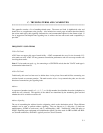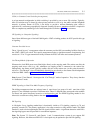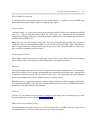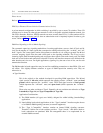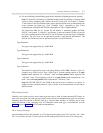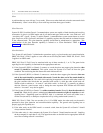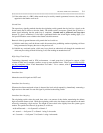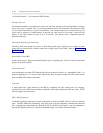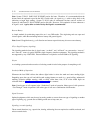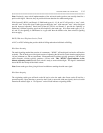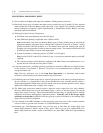TRUNKING TERMS AND CAPABILITIES C-9
_ ______________________________________________________________________________________
_ ______________________________________________________________________________________
_ ______________________________________________________________________________________
(3) If the other entity is a PBX, either encode may be used by mutual agreement; however, they must be
opposite for the trunk to work at all.
Ground Start
The supervisory signaling method whereby the originating switch grounds the ring lead (as a signal, to the
distant switch that it wishes to seize the trunk). The distant switch, in response, grounds the tip lead (as a
return signal indicating that the trunk loop is complete). Ground start is preferred over loop start
because (1) glare is minimized, (2) dial tone is guaranteed before the switch begins sending digits, (3) a
fool-proof indication occurs whenever the distant switch disconnects.
Removal of the tip ground between calls permits the local switch to:
(a) Hold the trunk busy until the distant switch disconnects thus prohibiting another originating call from
being connected to the party that was on the previous call.
(b) Prohibit any restricted station, which may have placed an authorized call through the attendant and
which may be waiting off-hook following a call, from making an unauthorized call.
High-Usage Trunk Group
Terminology frequently used in ETN environments. A trunk group that is designed to support a high
volume of traffic and, as needed, overflows to one or more alternate routes. These types of trunk facilities
are also sometimes called ‘‘Final Intertandem Tie Trunks.’’ For a contrast, refer to "Intermediate High-
Usage Trunk Group."
Immediate Start
Means that start dial signals are NOT used.
Immediate Start Incoming
Whenever the distant-end trunk seizure is detected, the local switch responds by immediately connecting a
digit receiver to the trunk. No start dial signal is provided to the calling switch.
Immediate Start Outgoing
The originating switch seizes the trunk, then waits a set amount of time before transmitting the address
digits toward the distant switch. While the originating switch waits, the distant switch responds to the trunk
seizure by connecting a digit receiver. The length of time waited varies slightly from one system type to
another. The specific time interval (by product) is as follows:
• 60-milliseconds——for System 85 or Generic 2
• 1-second——for System 75 or Generic 1 using 2-wire trunks
• 1.5-seconds——for System 75 or Generic 1 using 4-wire trunks



